This self-rating assessment is for your own information only. The only details Waka Kotahi collects are age and gender details for the purposes of monitoring usage of this tool. Waka Kotahi will not collect your answers or final score.
If you want a more in-depth assessment of your driving or you want to further develop particular driving skills you can contact a local driving instructor for a coaching session suitable for senior drivers.
Note: You must fill in all fields marked (*).
Your score is: (Go is 0 to 15; Caution is 16 to 34; Stop is 35 and over)
GO! You are aware of what is important about safe driving and are practicing what you know. See the suggestions for improvement section to learn how to become an even safer driver.
CAUTION! You may be engaging in some practices that need improvement to ensure safety. Look to the suggestions for improvement section to see how you might enhance your driving.
STOP! You are engaging in too many unsafe driving practices, and might pose a hazard to yourself and others. Please read the suggestions for improvement for ways to correct these problem areas.
Your score is based on your answers to a limited number of important questions. For a complete evaluation of your driving ability, many more questions would be required, along with medical, physical, and licensing examinations. Nevertheless, your answers and score give some indication of how well you are doing and how you can become a safer driver.
Suggestions for improvement
These are the areas in which you can improve the most.
1. I signal and check to the rear when I change lanes
Always is the only acceptable answer. However, you may have checked sometimes or never. Checking rearview and side mirrors, looking to the rear to cover the blind spots, and signaling well before you manoeuvre are the only ways to avoid hitting a car when changing lanes.
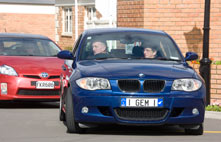
If you do not always change lanes in an appropriate way it may be that your bad lane changing practice becomes a habit. Also senior drivers can stop being as aware of their actions as they previously were.
Many senior drivers stop looking over their shoulders because they have lost flexibility, especially for those who have arthritis.
If looking over your shoulder to check for traffic is difficult for you, the following are some safety tips to consider:
- Drive with a partner to act as a co-pilot whenever possible.
- Install extra-wide rearview mirrors and side mirrors to decrease your blind spots. The side mirrors need to be used correctly, because those of convex lens design can make objects appear smaller and farther away than they actually are.
- Consider attending a Staying Safe workshop (link opens in new window).
- Make a concerted effort to be aware of your driving habits and always look before changing lanes.
2. I wear a safety belt
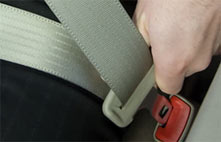
New Zealand law states approved safety belts must be fitted and worn correctly in all light passenger vehicles: ie, cars, vans, utes and 4-wheel drives. As the driver you are also responsible for making sure passengers under the age of 15 are using an approved child restraint or safety belt.
Typically, crashes involving senior drivers occur on clear days on straight, dry roads, and at intersections close to the driver's home.
You can increase your chances of surviving a crash or reducing injury by taking the following steps:
- Ensure that you and all passengers wear safety belts and understand that this would help to reduce injuries in the event of a crash.
- Wear your safety belt properly at all times, even if your car is equipped with air bags. Shoulder belts should fit across your shoulder and upper thigh bones.
- If your safety belt is extremely uncomfortable or cannot be properly fastened, take it to a competent mechanic for alterations. Many cars have adjustable shoulder belt mounts or you can buy devices that improve the fit.
3. I try to stay informed of changes in road rules and the road code

The best answer is always, but sometimes is certainly better than never.
Over the years there have been numerous changes to the Road Code, however it's often not at the top of our reading list! However to ensure we share the road safely, we need to understand current traffic rules/laws, devices, signs and symbols.
- Knowledge of signs and symbols can help you, especially if your ability to see these devices is diminishing. Sometimes, just knowing what the shapes of signs mean can help you anticipate their message. Familiarity and knowing what to do can eliminate hesitation and uncertainty when you need to make a decision fast.
- Check the Road Code to ensure you understand legal requirements and safety advice. If you do not have an up-to-date copy you can check the latest version on NZ Road Code (link opens in new window). Or you can purchase copies of the Road Code from Waka Kotahi agents such as your local AA office, Post Shop, VTNZ, as well as from most bookshops. They can also be loaned through public libraries.
- Make a point of reading articles in your local newspapers for changes in traffic patterns and/or intersections or signage so you can feel prepared and confident. Some motoring magazines publish driving tips that can help you stay current.
- Consider taking part in a Staying Safe workshop (link opens in new window).
4. Intersections are stressful - there is too much to watch for from all directions
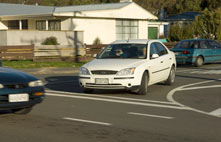
The best answer is never but if you checked sometimes or always, you are not alone. You must interact with other drivers and pedestrians whose movements and decisions are difficult to anticipate.
Intersections are one of the more common sites of collisions involving older drivers, especially right-turning situations.
Think about what bothers you most about intersections:
- Are you able to handle all the information quickly enough?
- Are you unsure about how to position the car for a left or right turn?
- Do you find it difficult to turn the steering wheel because of arthritis or some other physical problem?
Sometimes, this sort of analysis can help you handle other intersections as well.
Safety tips:
- Try studying the difficult intersection by observing it when you are on foot, noting the problems other drivers have to handle. This way you will get to know in advance what the common problems are.
- Consider taking part in a Staying Safe workshop (link opens in new window).
- Plan your trips to avoid busy intersections or use them at less congested times. If possible, plan an alternate route taking left hand turns. This avoids making a right hand turn which is a complex manoeuvre at busy intersections.
5. I find it difficult to decide when to join traffic on a busy state highway/motorway
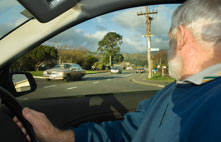
The best answer is never but if you checked sometimes or always, you are not alone.
Almost all drivers have some feelings of insecurity and nervousness about entering a motorway onramp or any state highway. If you find the motorways and higher speeds difficult to cope with, consider the following safety tips:
- Consider taking part in a Staying Safe workshop (link opens in new window) which may help give you more confidence.
- To help gain confidence, drive on the motorway during 'off peak' hours.
- If you still feel uncomfortable use another route if available.
6. I think I am slower than I used to be in reacting to dangerous driving situations
Never is the best answer, although you may have answered sometimes and still be considered a careful driver. Emergencies and dangerous situations may be relatively uncommon, but fast and safe reaction to them is essential. Most older drivers tend to have excellent judgment when driving. It is in reacting to emergencies that some older drivers most markedly demonstrate slower reaction times.
Responding quickly to traffic situations requires that several skills are sharp:
- First, you must see or hear the danger.
- Second, you have to recognise that the situation is dangerous and requires action.
- Third, you must decide how to act.
- Fourth, you must act appropriately.
A slight slowing down in each of these skills can result in a much slower overall response time to traffic emergencies.
Safety tips:
- See an occupational therapist and have your physical and mental driving skills evaluated.
- After talking to your doctor/specialist, exercise to maintain or increase the flexibility of your joints and your muscular strength.
- Consider taking part in a Staying Safe workshop (link opens in new window).
- Avoid driving in congested, fast-moving traffic whenever possible.
- Avoid driving if you have been drinking, are tired, ill, or have taken any medication that slows your mental or physical responses.
- If your joint and muscle impairments are serious, ask your doctor about medical, physical and surgical therapies. Anti-inflammatory drugs and various surgical procedures can lessen impairment sufficiently to permit safe driving.
- Ensure your next car has power steering, power brakes, automatic seat adjustment and other features to help you better control your car.
7. When I am really upset, I show it in my driving
The best answer is never. It takes only a brief acting out of emotions or a moment of inattention to result in a collision. Anger is an emotion to keep out of the car when you are in it.
As you age, experience and good judgment make you a better driver. However, if you were aggressive and hostile on the road when young, you are likely to be much the same today. The difference is that now, because of the likelihood of decreased driving skills, you may not have the ability to recover from those dangerous motorway/state highway situations that arise out of aggression and hostility. Getting behind the wheel in a highly emotional state, whether joy or anger, diverts attention from the driving task.
Safety tips:
- When you know that you are very emotional about something, delay driving until you have calmed down.
- Awareness is the first step towards controlling anger.
- The second step is handling it in a healthy manner, such as taking a vigorous walk, or talking with a friend or a professional counsellor.
- Consider taking part in a Staying Safe workshop (link opens in new window).
8. My thoughts wander when I am driving
The best answer is never, but even the best drivers catch themselves at doing this sometimes. However if you checked always, you are a dangerous driver. Driving is a complicated and demanding task, requiring continuous concentration. Even momentary lapses can lead to danger.
Investigations of collisions and fatalities of older drivers, particularly those over age 65, show that inattention and failing to take action are underlying causes, or at least contributing factors.
Many conditions can interfere with your ability to concentrate – emotional upset, fatigue, illness, pain, medications, alcohol, eating to excess (which can cause discomfort), loud music and other passengers.
You must control these distractions and other factors if it is your decision to drive. Give driving the full attention it deserves and you will be more aware of potential hazards and able to react quicker if required.
Safety tips:
- Treat driving as a complicated task requiring your full attention.
- If you catch yourself daydreaming or otherwise failing to concentrate on your driving, identify what is diverting you and try to overcome it.
- Take the necessary steps to remove or reduce distractions, whether they are those over which you have control, such as turning off the radio/CD player or those for which you will need help, such as dealing with emotional issues.
- Consider taking part in a Staying Safe workshop (link opens in new window).
9. Traffic situations make me angry

The best answer is never, but those who have been stuck in traffic for long periods understand why sometimes might be chosen. An answer of always reveals that some changes are needed.
Anger behind the wheel comes out in dangerous ways. Most people trapped in slow-moving traffic feel frustrated, and this frustration can lead to anger at the situation. However, some people direct their anger at other people, instead of the traffic situation itself. This can lead to inappropriate reactions, such as 'road rage' eg yelling at other drivers.
When drivers become over-emotional, all out of proportion to the situation, it is a clear sign that other emotions are the true cause and driving has become an outlet for expressing anger.
Fortunately, there are many things you can do to make driving less stressful and make your own responses less emotional.
Safety tips:
- Accept the fact that anger will do nothing to get you out of irritating traffic situations, it may even lead you into a crash. Recognise when you are getting angry. Taking a few slow, deep breaths and forcing yourself to smile are excellent stress-relievers.
- Try to avoid the kind of traffic you know is likely to generate anger. If the traffic runs smoothly, there is likely to be less anger.
- Consider taking part in a Staying Safe workshop (link opens in new window).
10. I get regular eye checks to keep my vision at its sharpest
The best answer is always.

Eighty-five to ninety-five percent of all sensing clues in driving come through the eyes. It may sound obvious, but poor visual capacity is directly related to poor driving. Reduced performance from faulty vision shows up in slowed response to signals, signs, and traffic events in ways that can lead to a collision.
Doctors cannot correct all vision problems. However, doctors or eye specialists can assist with those vision problems that are correctable, such as the ability to focus and disease-related vision loss.
Ageing does bring vision problems, but we all share these difficulties in a fairly predictable, natural way. No matter how well you have taken care of your eyes, these problems will develop.
Colours become harder to see. Red colours do not appear bright to many older eyes, and it may take some senior drivers twice as long as it took in earlier years to detect the flash of brake lights.
Several medical conditions that tend to come with age can affect sight, such as cataracts, glaucoma and diabetes. Regular visits to your doctor can help you head off their blinding effects.
Safety tips:
- Get regular eye examinations, at least every two years.
- Take the corrective steps recommended by your doctor. If spectacles are prescribed, keep them up to date by letting the doctor know at once if they are now working well for you. If your doctor recommends a cataract operation, keep in need that this is a simple, out-patient procedure that may dramatically improve your vision.
- Consider taking part in a Staying Safe workshop (link opens in new window).
- Accept the limits of 'ageing eyes' and reduce the amount of driving you do after dark and at twilight.
- Avoid highly-tinted windshields and always keep your windshield and headlights clean.
11. I check with my doctor/specialist or pharmacist about the effects of my medications on driving ability
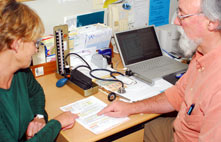
The best answer is always.
The medicines that slow us down generally also slow down or reduce our capacity to make decisions and process information rapidly. Quick decisions are needed to manoeuvre a vehicle safely. Tranquilizers, sleeping pills or cold remedies, such as cold tablets and cough syrup, can reduce driving ability.
Combinations of medicines present another danger, because these combinations can bring on unexpected side effects and bad reactions. If you have more than one doctor prescribing medications without knowing what the others are prescribing, you could be in danger.
It is important to avoid alcoholic beverages when taking other medications. With few exceptions, combining alcohol and other drugs significantly multiplies the impairment of your driving skills. Even worse, they make a potent additive that in extreme cases can cause coma or death.
Safety tips:
- Check with your doctor/specialist or pharmacist to determine what the side effects of a prescribed medication might be and what, if anything, you can do to counter them, particularly as they apply to driving.
- If you have more than one doctor/specialist prescribing medications, make sure all of them know about all the medications you are taking, both prescribed and over-the-counter. Take all your medicines with you when you go to the doctor.
- Read all labels and instructions on prescriptions and over-the-counter medications to determine side effects and their relationship to whether you should drive. Keep in mind that combinations of medicines can magnify their effects beyond the individual warnings.
12. I try to maintain a healthy lifestyle to help me remain a skilful driver
The best answer is always, but sometimes is also understandable. However, if you checked never, then you may have given up on your personal health or think that you have no control over it. You have far more control than you might think: what you eat, how much you exercise, and regular visits to the doctor (and following any doctor's advice given) can help you keep driving longer and may extend your life.
Safety tips:
- Think realistically about how much control you have and want in terms of health habits as they relate to your life in general and to your driving.
- Keep in mind that the slowness that comes with ageing can be deterred or overcome by motivation, regular exercise and practice.
- Take as much control as you can of your health habits and life style, recognising the obvious connection between command of personal health and skill in driving.
- Understand the value of nutrition, exercise, medical check-ups, and the effects of medications, drugs and alcohol. Your doctor can give you information about all of these areas and tell you where to get more information.
13. My children, other family members, or friends are concerned about my driving ability
Never is the best answer here, but many senior drivers have been aware of critical comments on their driving. If you have heard such comments, you may feel that the critics are worse drivers than you or are generally afraid in certain traffic situations, no matter who is driving.
It is difficult to accept criticism, but it can be a valuable source of information about your driving skills. If you chose always or sometimes, then you can use this information as an opportunity to learn where your driving needs the most improvement.
Safety tips:
- Lend an open ear to the comments of those concerned about your driving, and keep an open mind. Be sure that you are not dismissing the value of these comments out of denial.
- Look for clues to overcome the dangers of those comments that you judge as valid.
- Consider taking part in a Staying Safe workshop (link opens in new window).
- Look at your responses to the other questions in this self-evaluation. Be very honest with yourself, so you can locate specific problem areas and correct them. Human beings are never too old to learn new skills.
- Begin to prepare for the day when driving will no longer be possible for you, so you can remain mobile after you stop driving. With adequate planning, a non-driving life does not have to be restrictive.
14. In the past two years have you been involved in any traffic incidents where there has been police involvement? Eg warnings, traffic infringements (not including parking over time-limit infringement tickets)

None is the best answer here.
One or two incidents might mean that you are not as up to date as you should be on laws and road rules. Three or more demands a serious look at how you are driving.
Some older drivers are aware of their limits and cope with them. Others can overestimate their real capabilities and do not adjust their driving habits.
Some common problems include failure to observe signs and signals, careless crossing of intersections and changing lanes without due regard for others, driving too slowly and improper reversing. Another problem is applying the foot on the accelerator instead of the brake. Inattention and having too much information to handle at one time seem to be the root of most of these conditions
Safety tips:
- Think about any traffic incidences that you may have been involved in and think of them as a warning
- Consider taking part in a Staying Safe workshop (link opens in new window).
15. Have you had any crashes in the past two years?
Once again, none is the best answer.
Age is not necessarily a precursor to being an unsafe driver but senior drivers need to manage the effects of ageing:
- deteriorating eyesight and hearing
- slower reaction and action times
- for some, the side-effects of medication.
Many senior road users can find themselves 'legally' at fault in motor crashes, through no deliberate intent on their part. This can be caused by:
- not being able to analyse complex and rapidly changing traffic situations quickly.
- not seeing or hearing some hazard.
- having a gradual loss of hearing or eyesight that they are unaware of.

People tend to get physically frailer with age, meaning older drivers are more likely to be injured or die following a crash than younger people.
Some senior drivers need to consider more carefully whether night driving or in bad weather is advisable.
Senior drivers can also have a higher incidence of medical conditions that can precipitate crashes, such as heart disease.
Safety tips:
- Consider taking part in a Staying Safe workshop (link opens in new window).
- If your crash occurred at night or in bad weather, and you suspect that these factors contributed to the crash, avoid driving at these times.
- Begin to prepare for the day when driving may no longer be possible and think about options for remaining mobile after you stop driving.
- Be honest with yourself, if you are a danger on the road, take responsibility and either improve your skills or retire from driving.